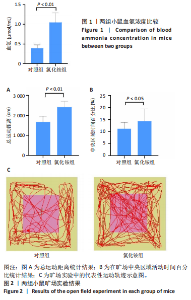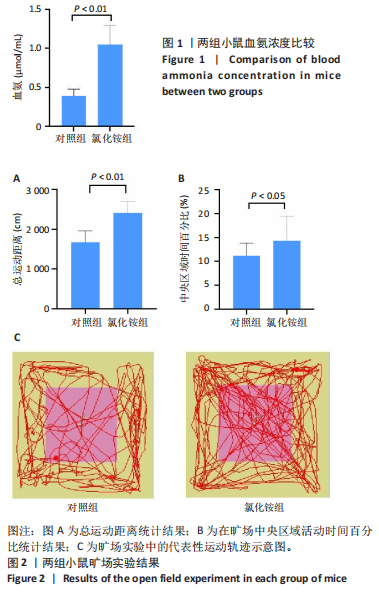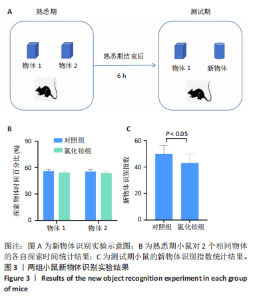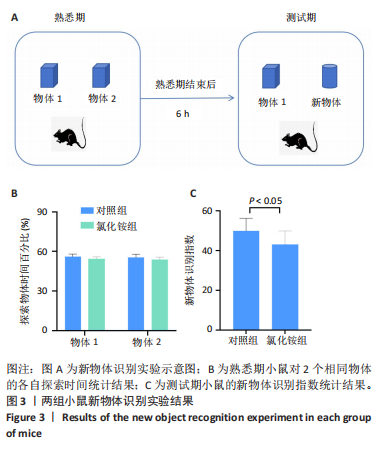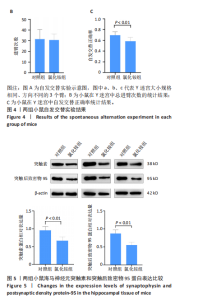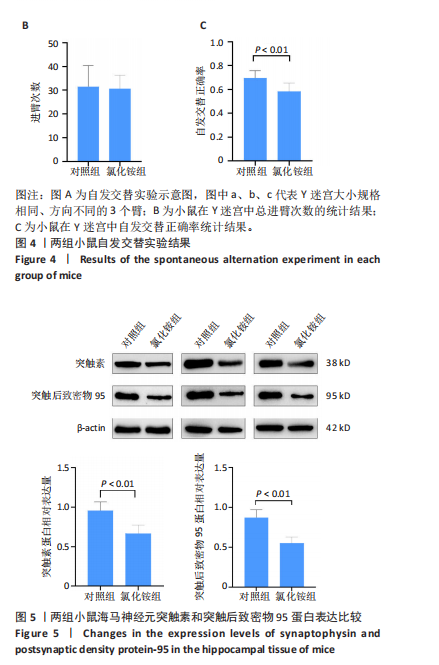[1] LIANG Y, WU Y, LI J, et al. Effects of ammonia toxicity on the histopathology, detoxification, oxidative stress, and immune response of the cuttlefish Sepia pharaonis and the mitigation of gamma-aminobutyric acid. Ecotoxicol Environ Saf. 2022;232:113256.
[2] LI Y, PAN L, ZENG X, et al. Ammonia exposure causes the imbalance of the gut-brain axis by altering gene networks associated with oxidative metabolism, inflammation and apoptosis. Ecotoxicol Environ Saf. 2021;224:112668.
[3] CHEN JR, WANG BN, TSENG GF, et al. Morphological changes of cortical pyramidal neurons in hepatic encephalopathy. BMC Neurosci. 2014;15:15.
[4] VARGA V, PETERSEN P, ZUTSHI I, et al. Working memory features are embedded in hippocampal place fields. Cell Rep. 2024;43(3):113807.
[5] NADEL L. Some Memories of Stalking the Seahorse. Hippocampus. 2025;35(1):e23656.
[6] JIA X, WANG Q, JI J, et al. Mitochondrial transplantation ameliorates hippocampal damage following status epilepticus. Animal Model Exp Med. 2023;6(1):41-50.
[7] HUAN Y, QUAN H, JIA B, et al. High-altitude cerebral hypoxia promotes mitochondrial dysfunction and apoptosis of mouse neurons. Front Mol Neurosci. 2023;16:1216947.
[8] SHARMA K, AKRE S, CHAKOLE S, et al. Hepatic encephalopathy and treatment modalities: A review article. Cureus. 2022;14(8):e28016.
[9] KITANO T, MATSUMURA S, SEKI T, et al. Characterization of N-methyl-D-aspartate receptor subunits involved in acute ammonia toxicity. Neurochem Int. 2004;44(2):83-90.
[10] SORIA LR, ALLEGRI G, MELCK D, et al. Enhancement of hepatic autophagy increases ureagenesis and protects against hyperammonemia. Proc Natl Acad Sci U S A. 2018;115(2):391-396.
[11] MOODY M, SCHMIDT TA, TRIVEDI R, et al. Administration of alendronate exacerbates ammonium chloride-induced acidosis in mice. PLoS One. 2023;18(9):e0291649.
[12] TORRES VE, COWLEY BD JR, BRANDEN MG, et al. Long-term ammonium chloride or sodium bicarbonate treatment in two models of polycystic kidney disease. Exp Nephrol. 2001;9(3):171-180.
[13] ANGELOVA PR, KERBERT AJC, HABTESION A, et al. Hyperammonaemia induces mitochondrial dysfunction and neuronal cell death. JHEP Rep. 2022;4(8):100510.
[14] SU Q, LI T, HE PF, et al. Trichostatin A ameliorates Alzheimer’s disease-related pathology and cognitive deficits by increasing albumin expression and Abeta clearance in APP/PS1 mice. Alzheimers Res Ther. 2021;13(1):7.
[15] KUDRYASHOV NV, VOLKOVA AV, SHIMSHIRT AA, et al. Specifics of experimental modeling 8-OH-DPAT-induced perseverative behavior in mice. Bull Exp Biol Med. 2023;175(1):41-44.
[16] BAI Y, WANG S, WU F, et al. The changes of mitochondria in substantia nigra and anterior cerebral cortex of hepatic encephalopathy induced by thioacetamide. Anat Rec (Hoboken). 2019;302(7):1169-1177.
[17] SU Q, REN YH, LIU GW, et al. Trichostatin A relieves anxiety-and depression-like symptoms in APP/PS1 mice. Front Pharmacol. 2024; 15:1333235.
[18] HARPER CB, BLUMRICH EM, COUSIN MA. Synaptophysin controls synaptobrevin-II retrieval via a cryptic C-terminal interaction site. J Biol Chem. 2021;296:100266.
[19] LI Y, WANG H, GAO Y, et al. Circ-Vps41 positively modulates Syp and its overexpression improves memory ability in aging mice. Front Mol Neurosci. 2022;15:1037912.
[20] DORE K, CARRICO Z, ALFONSO S, et al. PSD-95 protects synapses from beta-amyloid. Cell Rep. 2021;35(9):109194.
[21] TAXIER LR, PHILIPPI SM, YORK JM, et al. The detrimental effects of APOE4 on risk for Alzheimer’s disease may result from altered dendritic spine density, synaptic proteins, and estrogen receptor alpha. Neurobiol Aging. 2022;112:74-86.
[22] BOURGEOIS S, HOUILLIER P. State of knowledge on ammonia handling by the kidney. Pflugers Arch. 2024;476(4):517-531.
[23] JO D, KIM BC, CHO KA, et al. The cerebral effect of ammonia in brain aging: blood-brain barrier breakdown, mitochondrial dysfunction, and neuroinflammation. J Clin Med. 2021;10(13):2773.
[24] HAUSSINGER D, DHIMAN RK, FELIPO V, et al. Hepatic encephalopathy. Nat Rev Dis Primers. 2022;8(1):43.
[25] SHAWCROSS DL, THABUT D, AMODIO P. Ammonia - an enduring foe - What evaluating whole body ammonia metabolism can teach us about cirrhosis and therapies treating hepatic encephalopathy. J Hepatol. 2023;79(2):266-268.
[26] SORENSEN M, ANDERSEN JV, BJERRING PN, et al. Hepatic encephalopathy as a result of ammonia-induced increase in GABAergic tone with secondary reduced brain energy metabolism. Metab Brain Dis. 2024;40(1):19.
[27] KROUPINA K, BEMEUR C, ROSE CF. Amino acids, ammonia, and hepatic encephalopathy. Anal Biochem. 2022;649:114696.
[28] VIDAL-CEVALLOS P, CHAVEZ-TAPIA NC, URIBE M. Current approaches to hepatic encephalopathy. Ann Hepatol. 2022;27(6):100757.
[29] HAUSSINGER D, BUTZ M, SCHNITZLER A, et al. Pathomechanisms in hepatic encephalopathy. Biol Chem. 2021;402(9):1087-1102.
[30] LU K. Cellular pathogenesis of hepatic encephalopathy: An update. Biomolecules. 2023;13(2):396.
[31] WILKINSON DJ, SMEETON NJ, WATT PW. Ammonia metabolism, the brain and fatigue; revisiting the link. Prog Neurobiol. 2010;91(3):
200-219.
[32] OCHOA-SANCHEZ R, TAMNANLOO F, ROSE CF. Hepatic encephalopathy: From metabolic to neurodegenerative. Neurochem Res. 2021;46(10): 2612-2625.
[33] NEEDHAM E, WEBB G. Hepatic encephalopathy: a neurologist’s perspective. Pract Neurol. 2024;24(3):200-206.
[34] JU YH, BHALLA M, HYEON SJ, et al. Astrocytic urea cycle detoxifies Abeta-derived ammonia while impairing memory in Alzheimer’s disease. Cell Metab. 2022;34(8):1104-1120 e1108.
[35] MCALPIN BR, MAHALINGAM R, SINGH AK, et al. HDAC6 inhibition reverses long-term doxorubicin-induced cognitive dysfunction by restoring microglia homeostasis and synaptic integrity. Theranostics. 2022;12(2):603-619.
[36] AJOY R, LO YC, HO MH, et al. CCL5 promotion of bioenergy metabolism is crucial for hippocampal synapse complex and memory formation. Mol Psychiatry. 2021;26(11):6451-6468.
[37] WHITE DN, STOWELL MHB. Room for Two: The synaptophysin/synaptobrevin complex. Front Synaptic Neurosci. 2021;13:740318.
[38] ZHOU Y, LU H, LIU Y, et al. Cirbp-PSD95 axis protects against hypobaric hypoxia-induced aberrant morphology of hippocampal dendritic spines and cognitive deficits. Mol Brain. 2021;14(1):129.
[39] LIU XF, LU JJ, LI Y, et al. The interaction of ammonia and manganese in abnormal metabolism of minimal hepatic encephalopathy: A comparison metabolomics study. PLoS One. 2023;18(8):e0289688.
|
